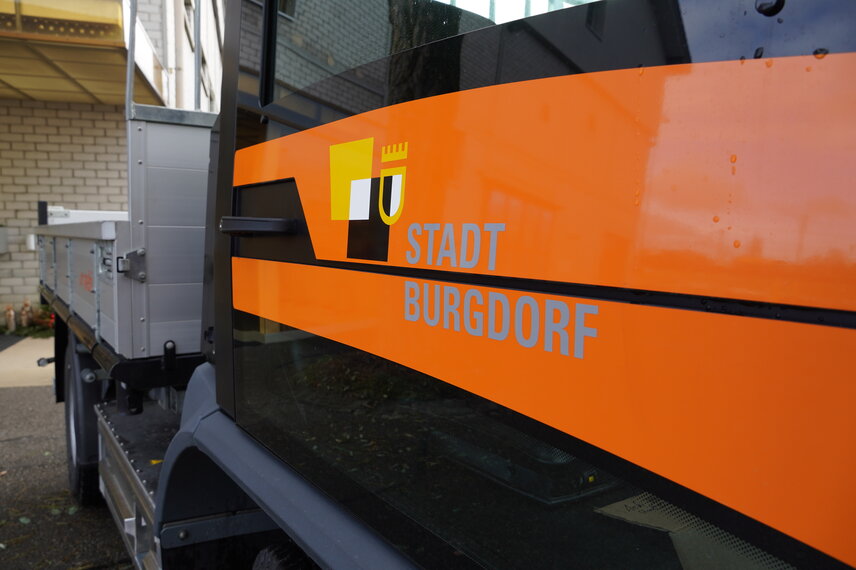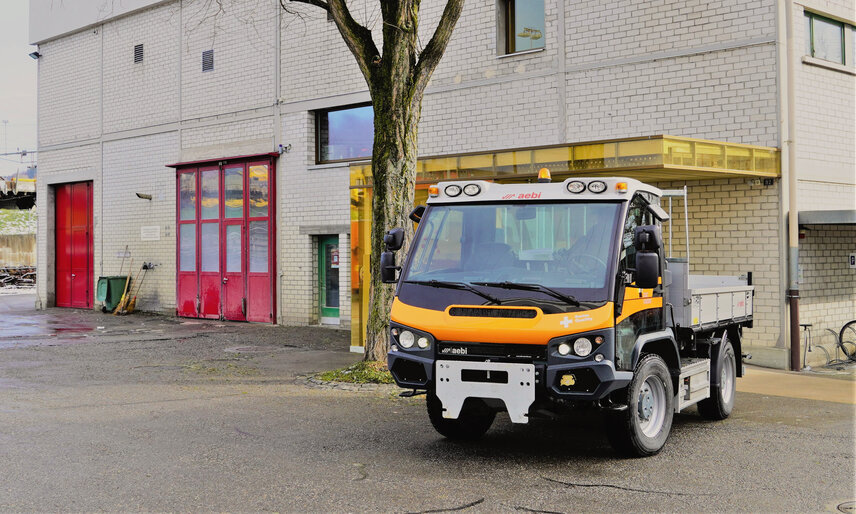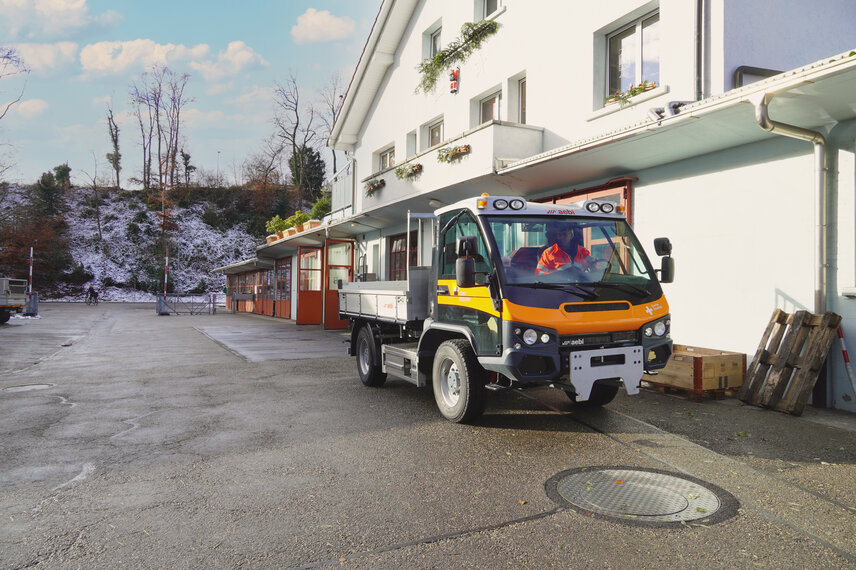As a quick reminder: the town of Burgdorf has set itself a goal of becoming climate-neutral by 2030. This is an ambitious goal, not least because it demands the complete replacement of all petrol and diesel vehicles in the town. This change will result in lower noise emissions and overall operating costs, as well as making a significant contribution to achieving CO2 neutrality. The town of Burgdorf has a population of around 17,000 and has had a close partnership with Aebi since 1883. It is interesting to note that Burgdorf has actually been making environmentally conscious decisions for over a century: the Burgdorf-Thun railway, Europe’s first fully electric railway, was opened in 1899. 90 years later, as part of the “Burgdorf model city for walking and cycling” pilot project, the entire uptown area became a traffic-free zone.
And now the whole town intends to become CO2-neutral by 2030, with the administration also achieving 100% neutrality. “All new vehicles we procure must be powered by alternative fuels,” says Georg Brechbühl, head of the road maintenance depot. Not only must cars, vans and commercial vehicles all be powered by alternative fuels in the future, but any machines and equipment used in the depot that currently run on petrol or diesel must also be changed over. “This includes rollers, lawnmowers, backpack leaf blowers – and, of course, large municipal vehicles. This is quite a challenge, in particular when it comes to the municipal vehicles, since there are either no electric models available on the market or the machines that do exist do not meet our requirements.”

We actually introduced a fully electric refuse truck in the year 2000, which disposes of Burgdorf’s waste in an environmentally friendly manner. The electric drive can reduce CO2 emissions by 43,000 kg per year. “Plus, staff are grateful that they no longer have to breathe in diesel exhaust fumes when they’re stood at the back of the trucks,” comments Jonas Lüdi, Fleet Manager at the road maintenance depot.
But it’s not just CO2 emissions that need to be lowered – the town is also looking to reduce the cost and number of vehicles. “Let’s use the electric refuse trucks as an example,” explains Jonas Lüdi. “They do cost more to purchase than a conventional vehicle, but you can make up for this with the additional costs over the next six years. As we’re using around 10,000 litres less diesel per year, as well as the lower servicing costs, taxes and maintenance costs, it definitely pays off in the long term.”

So how does the Aebi eVT 450 prototype perform? “We’re already hoping that we’ll be able to replace several vehicles with the eVT 450 in the future due to its versatile application potential in both summer and winter,” Georg Brechbühl continues. “The great thing about the eVT is that it’s a municipal vehicle that can also be used off-road.” The eVT 450 was supplied fully equipped for town use – with a snow plough and grit spreader for the winter and a three-way tipper and crane for the summer. So far, everything has been as good as the conventional diesel VT 450. However, the biggest sticking point before making the commitment to changing over to electric vehicles is the battery life. “These vehicles have to work hardest during winter, when we’re out in snowstorms with ploughs and salt spreaders,” says Jonas Lüdi. “This is when the vehicle is subjected to the highest demands and so the demands on the battery are correspondingly high. The battery must have a capacity equivalent to 75 litres of diesel in order to be able to complete the entire winter route.” The vehicle is not yet able to do this. Our developers are thus eagerly awaiting the snow. To gain a better understanding of the performance requirements, for the next phase we have fitted a device that can precisely record the energy consumption. This will provide valuable insights for further development. “What is really exciting about the eVT 450 is the acceleration, which is considerably better than before,” explains Jonas Lüdi. “The upkeep is also more cost-effective – servicing so far has cost us around half that of diesel vehicles, and vehicle checks are also a lot faster.”
We are very grateful to the town of Burgdorf for working with us, as well as Georg Brechbühl and Jonas Lüdi for talking to us. And, as always, we will be here. We promise.




